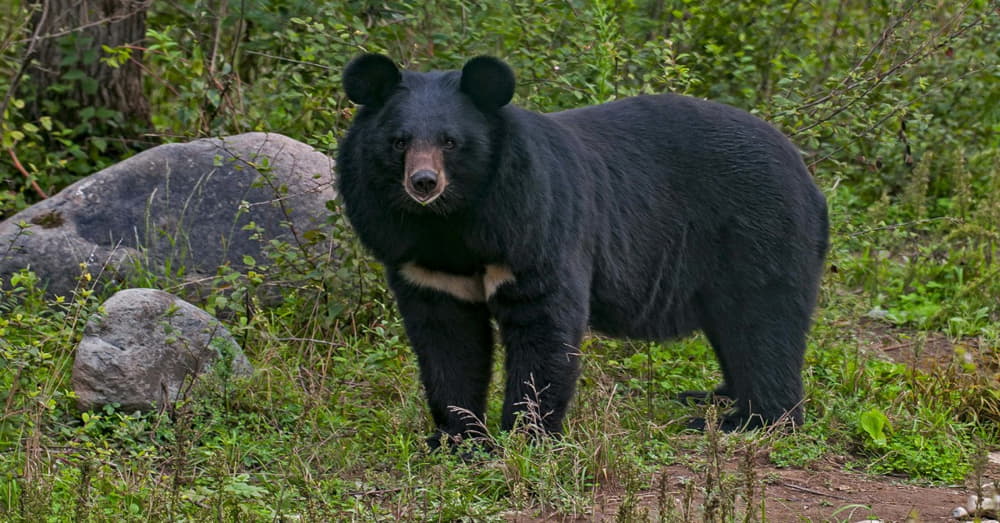Understanding what time of day are bears most active is an important aspect of your upcoming hunting trip. Bear activity patterns are influenced by their ecological and environmental characteristics. Typically, bears are crepuscular animals, meaning they are most active during dawn and dusk.
This behavior aligns with their omnivorous diets, allowing them to optimize foraging during twilight hours when various food sources are available. However, the specific timing of their activity can vary by species and geographic location. Because there are many distinct species of bears that live in various settings.
Additionally, seasonal factors, such as hibernation and mating periods, also greatly impact their activity times. These habits are largely determined by the bear’s species and gender. In this article, we will explore in detail the activity patterns of bears during the day and their specific activities. Keep reading to know more!
Table of Contents
What Time Of Day Are Bears Most Active?
Bears are most active during the crepuscular periods, which are dawn and dusk. This is when their prey is also most active, making it an opportune time for hunting. However, bears can be active at any time of day, depending on their specific needs and the availability of resources.
It’s essential to note that the specific timing of bear activity can vary depending on the bear species and their local environment. For example, polar bears do not have a fixed activity time. Because in the arctic, they have to endure months of darkness and months of sunshine, depending on the time of the year.
When are black bears most active? Black bears are most active in the early mornings and late evenings during the spring and summer months. The same is true for grizzly bears.
Bears normally avoid the heat of the day, which means they will take a sleep or two during the peak mid-afternoon heat. As a result, bears will typically do their foraging, hunting, socializing, and mating in the early mornings and late evenings.
Bears also feed or hunt within thickets during the cooler hours of the day. Or they are often present near water sources such as lakes and rivers to cool off before or after their midday naps.

During mating season around late spring to early summer, bears become more active as they search for potential mates. Male bears may travel long distances during this time in search of females, making them more visible and increasing their activity level. Bears hibernate throughout the winter, so bear encounters are less likely between August and February.
What Do Bears Do During The Day?
Bears spend most of their day foraging and resting. Let’s take a look at the general patterns of bear activity throughout the day.
Dawn
At dawn, bears emerge from their dens or bedding areas to begin foraging for food. This is typically the time when they are hungriest after a night of rest and their metabolic rate has slowed down. During this time, bears may travel to different areas in search of food sources such as berries, insects, or small mammals.
Morning
Bears continue to forage for food during the morning hours, taking advantage of the cooler temperatures and ample food supply. They may also use this time to travel further distances in search of new food sources or water.
Midday
During the hottest part of the day, bears almost always find a shady spot to nap in. Around midday and through the early afternoon, bears typically retreat to thickly vegetated areas. This is especially true during the summer months when temperatures can become too uncomfortable for them to be active.
Afternoon
As the day starts to wind down, bears may resume their foraging activities. Black bears are most active during the late afternoon, typically between 4-8pm. During this time, they may also move to different areas in search of food or water.
Besides resting and foraging, they must also defend their area, especially adult males. This includes marking it so other bears know it’s occupied. Bears use tree markings to indicate their territory. They stand on their hind legs and make deep scrapes in the tree bark with their claws and sometimes their teeth. This serves as a warning to other adult males as well as an invitation to females that are ready to breed.
Evening
Dusk is when bears are the most active after dawn. This is when their prey is once again most active and when they start to prepare for the night ahead. Bears may engage in more intense foraging during this time, as they need to stock up on food for the long night ahead.
Read this post: Do Black Bears Stay In The Same Area?
Are Bears Active At Night?
No, bears are not usually active at night. They normally seek food for an hour or two after sunset, but then prefer to find a comfy position to sleep for the rest of the night. Bears also wake up about half an hour before sunrise rather than sleeping until daylight.
However, there are several occasions where bears may be more active at night than usual. Black bears are active at night in regions where grizzly bears and black bears coexist. Grizzlies are aggressive, and they are significantly larger and stronger than black bears. Being active at night helps black bears avoid dangerous encounters with other bears.
Black bears also tend to be more nocturnal when they live close to people. This helps them avoid potentially dangerous encounters. Black bears living near urban areas often enter people’s properties to look for food in places such as trash cans or unguarded vegetable gardens.

